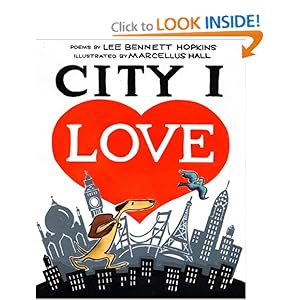Mora, Pat. 2010. Dizzy in your Eyes Poems about Love. New York: Alfred A. Knopf.
Thoughts of love and relationships occupy the majority of a teenager’s time, and in this collection of poems about love, Mora describes the feelings of love teens have for family, friends, sports, and a boyfriend or girlfriend. Although most of the poems are written in free verse, some poems are sonnets, haikus, acrostics, and even a clerihew. While the poems are written for entertainment purposes, on the page opposite the poem, there is a brief explanation of the poem’s style for an interested reader.
While many see the teen years as life’s last chance to be carefree before embracing adulthood, teens deal with tough issues that Mora adequately expresses. In “Questions”, the narrator is afraid of his friend’s cutting. In “Pressure”, a girl is feeling the pressure to have sex with her boyfriend but is unsure of what to do. In “Kissing”, the teen girl learns the weight of having to carry herself now that her dad can’t carry her problems for her. Each poem conveys a different feeling and evokes a different personal response from the reader.
The poem “Doubt” sums up the fears all teens have, especially about love.
“What if guys think I can’t kiss because I can think?
What if I ask her out and she laughs?
Why are all the guys I know so short?
Why do girls like those handsome fakes
with fast cars and fat wallets?
Can I eat less and less until I’m transparent and shine?
Why do their eyes squint when we speak Russian?
Do boys really imagine all of us without clothes?
What if no one wants to touch me because I’m too fat?
Why do they start whispering about me when I walk by?
When I dance, why do my feet get stuck, as if music
is a foreign language?
Does anyone care about the real me?
Does my breath smell like a fish tank?
Why don’t they like him just because he’s Muslim?
What if the way I kiss is dull, like oatmeal?
Why do adults say, ‘What do you know about love?’
Why is my dog the only one who really understands me?
How does it feel to be married?
Why do my parents kiss in public?
If I sing better than she does, why don’t I get up there and sing?
Why do teachers all think I’m dumb as a garbage can?
What will it be like living far away in a dorm with strangers?
What if, when I leave,
I crumple
by myself?” (Mora 11)
Told through simple questions, Mora asks the questions all teens have wondered, from the superficial to the thoughtful to the insecure. Although the words lack the metaphors and rhythmic patters of some poetry, the honesty of the poem reflects teens’ fears.
The final poem “My Song” ends with every teen’s dream as they leave high school to move on to college.
“It’s still morning,
the spring of my life.
I’m starting my journey,
family and friends at my side,
my song inside,
and love as my guide.” (Mora 165).
Valentine’s Day, or the days leading up to it, is a great time to read and to write about love with teenagers. That’s what is on their minds anyway. “With Feeling” is an excellent poem to start off with. The narrator is annoyed with the piano teacher and the English teacher who urge him to play and to write with feeling. His response is, “Feeling? I am feeling. Don’t they see it shimmering on my skin, plain for all to see? I burn with feeling.” This poem can be a springboard for students to write about their own feelings.














